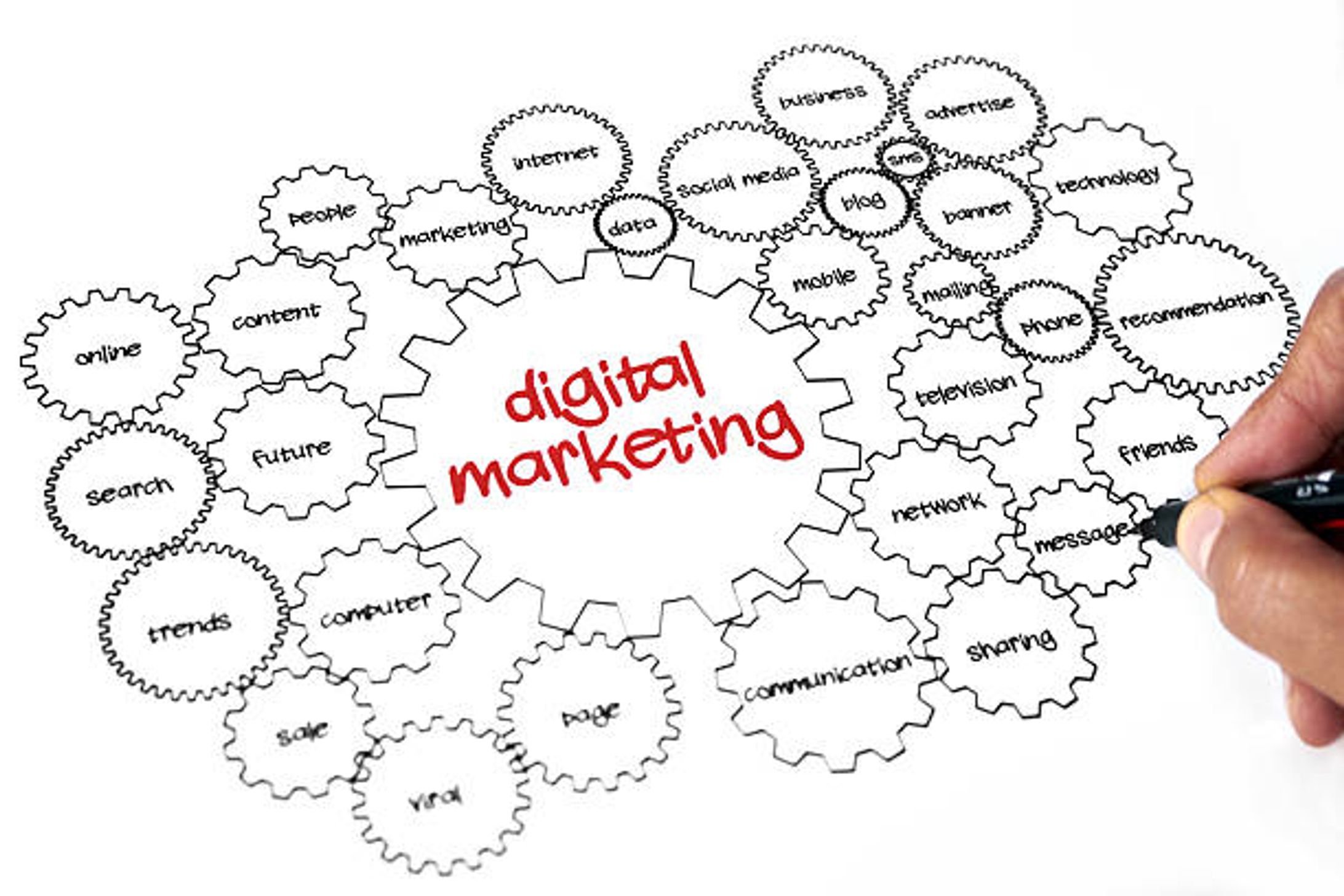When you scroll through Instagram, click on a Google ad, or read an email from your favorite brand, you’re witnessing the end result of weeks (sometimes months) of planning, coordination, and execution. Behind those polished visuals and clever captions lies the powerhouse of modern brand growth: a Digital Marketing Agency.

But what actually happens behind the screens at a digital marketing agency? How do ideas turn into campaigns, how is success measured, and what roles do different experts play?
In this blog post, we’ll walk you through the real campaign execution process inside a digital marketing agency—step by step—highlighting how strategy, creativity, data, and technology come together to drive business results
Step 1: Client Onboarding and Goal Alignment
Every campaign begins with understanding the client’s brand, business goals, and market. At this point, the Digital Marketing Agency focuses on:
- Who is the target audience?
- What is the product or service USP?
- What are the short-term and long-term goals?
- Which platforms are best suited for promotion?
- What’s the expected ROI or conversion rate?
Deliverable: A project brief and roadmap outlining objectives, KPIs (Key Performance Indicators), and timelines.
Example: A local fashion boutique wants to drive footfall and online orders. The agency proposes a combined SEO, Instagram ad, and influencer campaign with a target of 300 leads per month.
Step 2: Market and Competitor Research
No campaign is built in a vacuum. The agency’s research team dives deep into:
- Audience demographics and behavior
- Market trends and seasonal demand
- Competitor digital strategies
- Keyword analysis for SEO and PPC
Tools like Google Trends, SEMrush, Meta Audience Insights, and SimilarWeb help gather actionable insights.
Deliverable: A data-driven strategy document that guides creative and media planning.
Fun fact: Some agencies even analyze customer reviews from competitor products to identify pain points and use them in ad messaging!
Step 3: Strategy and Campaign Planning
With research in hand, the strategy team works with creatives and performance marketers to map out:
- Campaign concept/theme
- Platform selection (Google, Facebook, YouTube, LinkedIn, Pinterest, etc.)
- Content formats (Reels, stories, blogs, video ads, emails)
- Ad funnel design – Awareness → Consideration → Conversion
- Budget allocation
Deliverable: A comprehensive campaign plan that includes creatives, media strategy, timelines, and projected metrics.
Example: For an eco-friendly skincare brand, the agency may create a theme like “Glow Naturally” and plan weekly Reels, influencer unboxings, blog content, and Instagram ads targeting conscious consumers.
Step 4: Creative Production
Now, the real fun begins—content creation. This is where visual designers, copywriters, videographers, and social media managers come together.
Tasks include:
- Designing social media posts, carousels, and banners
- Writing ad copy, captions, blog posts, emailers
- Filming and editing videos for Reels, Shorts, or YouTube
- Creating landing pages with strong CTAs
Everything is tailored to the brand’s tone, goals, and target platform.
Deliverable: A full creative toolkit ready for deployment—visually compelling, emotionally resonant, and optimized for performance.
Tip: A/B testing begins here too. Multiple versions of a single ad are created to test which works best in the real world.
Step 5: Technical Setup and Tracking
Before any campaign goes live, the agency’s technical team ensures all backend tools are ready:
- Pixel integration (Meta Pixel, Google Ads tag)
- UTM parameter setup for tracking source traffic
- CRM or email automation setup (Mailchimp, Klaviyo, etc.)
- Analytics dashboards for real-time tracking
Without this step, it’s nearly impossible to measure results accurately or optimize performance later.
Deliverable: Fully integrated tracking systems that connect campaigns to actual business outcomes like leads, sales, and signups.
Agency Best Practice: Creating a live dashboard for the client using tools like Data Studio or Looker for transparency.
Step 6: Campaign Launch and Media Buying
With all systems ready, it’s time to launch. The media buying team handles:
- Setting up ads on Google, Meta, or other platforms
- Defining budgets, bidding strategies, and target audiences
- Scheduling content for social posts or email campaigns
- Coordinating with influencers or affiliates if involved
Deliverable: A live, multi-platform campaign reaching real audiences across touchpoints.
Example: An edtech startup launches a Google Search ad for "Best IELTS Coaching in Delhi" while simultaneously running Instagram stories showing real student testimonials.
Step 7: Monitoring, Optimization, and Performance Tuning
Campaigns are never “set and forget.” A Digital Marketing Agency watches closely and makes adjustments in real time. This includes:
- Monitoring click-through rates (CTR), cost per click (CPC), and conversions
- Pausing underperforming ads and reallocating budgets
- Updating creatives or copy based on user behavior
- Testing different headlines, images, CTAs
Regular stand-ups and mid-campaign reviews help the team stay agile and responsive.
Deliverable: Weekly or bi-weekly performance reports with actionable insights.
Real Scenario: An ad for a fitness app gets clicks but no downloads. The agency swaps out the landing page and adds a 15% discount code—downloads spike by 40%.
Step 8: Reporting and Analysis
At the end of a campaign cycle, the agency delivers a detailed report showing:
- How the campaign performed vs KPIs
- Platform-wise performance breakdown
- ROI and customer acquisition cost
- Insights into user behavior and feedback
- Suggestions for future campaigns
These reports aren’t just numbers—they tell the story of how strategy became results.
Deliverable: A presentation-ready campaign analysis with recommendations for the next phase.
Client Feedback: This is where many clients realize the true value of their partnership with the agency—when they see how every rupee spent was measured and justified.
Real Campaign Success Story
Let’s look at a real example from an FMCG client.
Brand: FreshSip – a startup selling flavored herbal teas
Goal: Drive online sales via Instagram and Google
Agency Actions:
- Created short Reels showing different tea flavors
- Ran Google Shopping ads for keywords like “Buy herbal tea online”
- Partnered with influencers in the wellness niche
- Used WhatsApp Business API for abandoned cart recovery
Results in 90 Days:
- 300K+ Instagram reach
- ROAS of 7.2X on Meta Ads
- 1200+ new email subscribers
- ₹10 lakh+ in online sales
Behind the scenes, each part of that campaign was executed by a team that worked seamlessly across strategy, content, ads, and analytics.
Final Thoughts: Why Execution Matters
While many brands have big marketing dreams, few achieve them without the right execution. That’s where a Digital Marketing Agency shines—not just in idea generation, but in meticulous delivery.
From the first brainstorming session to the final report, campaign execution at an agency is about:
- Coordinating talent across domains
- Aligning every asset with brand goals
- Leveraging data at every stage
- Constantly testing, learning, and adapting
So the next time you admire a smart ad, a viral video, or a perfectly targeted promo, remember: behind the screen is a team of experts turning digital strategy into real-world impact.



